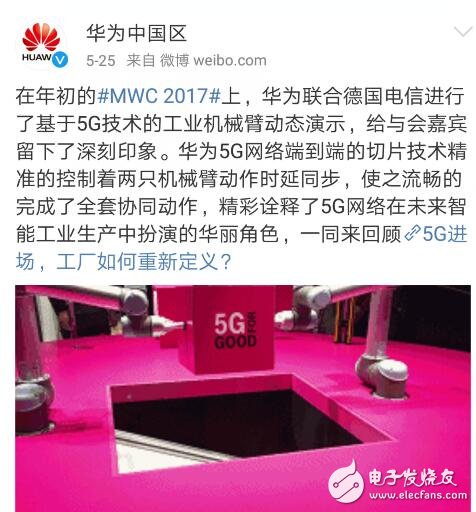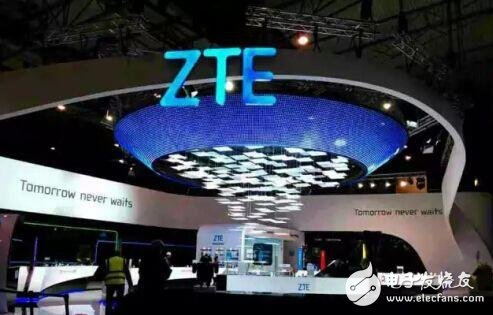In the future 5G era, there are big differences in the requirements for network services in different industries. If operators use traditional methods to build networks to match service renewals in various industries, this network will become extremely large and complex, and network operation and management and management will become extremely difficult. In order to meet the needs of the future network, network slicing technology is born. As the main equipment supplier of the 5G industry chain, Huawei and ZTE have launched their own big moves in this field.
In November 2016, Huawei and Deutsche Telekom demonstrated the world's first 5G end-to-end autonomous network slicing. At MWC2017, Huawei once again joined hands with Deutsche Telekom to jointly demonstrate network slicing in mobile broadband convergence (FMC), augmented reality (AR), Manipulators control commercial use cases for 3 application scenarios (for individual/family, AR/VR, industrial manufacturing 3 scenarios)

At the Huawei Global Analyst Conference in April 2017, Yang Chaobin, president of Huawei's 5G product line, proposed the “Four Great Decoupling†concept based on the CloudRAN architecture. One of them is “Physical Topology and Service Decoupling: Network Slicing, Realizing One Network camp".
In terms of end-to-end landing of network slicing technology, it is reported that as the industry's leading provider of SDN/NFV technology and transformation consulting service provider, Huawei is trying to implement SDN and NFV on 5G networks, so that the network supports slicing technology.
At the 2017 World Mobile Congress in Barcelona (MWC2017), Huawei released the industry's first 5G bearer fragmentation router, which provides 50GE base station access capability and is seamlessly compatible with 100GE. Based on the innovative Flexible Ethernet technology, port channelized physical isolation is provided to provide differentiated SLA guarantees for different services.
At MWC2017, BT announced a joint study of 5G slices with Huawei and plans to showcase its network slicing research results at MWC in February 2018. Huawei also signed a strategic cooperation agreement with European operator Orange Group to promote 5G and wireless cloud-wide, and researched technologies including 5G network slicing.
ZTE Corporation demonstrated the network slice prototype in cooperation with China Mobile in 2016 at MWC Barthel and Shanghai Exhibition, and conducted network section verification tests with Telefonica at 5G Lab in Madrid.

How to cut and how to ensure network security
Since network slicing technology is so important, how to cut the network is a more important issue during the deployment process. Zheng Fangting said that there is no uniform standard for dividing slices, but the number of slices should not be too much, and the primary criterion is to serve the business model.
After slicing the network, orchestration is very important. Zheng Fangting said that the basis of the slicing technology is choreography. If there is no automated orchestration, it is unimaginable to deploy network slicing by hand. But the reality is that end-to-end network slices contain network devices and orchestrators from multi-vendors, multiple series, multiple versions, and it is not realistic to manage all devices with a single orchestrator. It is possible for the network to have a "splicing" in some sense. These technologies need to be explored together with the operators and operators when the network slices really enter the commercial deployment phase, so that the product research and deployment models are gradually maturing.
With the introduction of network slicing technology, the isolation and sharing between slices and slices poses a challenge to network security. It is reported that ZTE has laid out an advanced security architecture for infrastructure, cloud services, network functions, network component services, network slicing layers and management domains. Building the safest carrier-grade network.
"In terms of technology, operators' network slicing research perspective has gradually expanded to include bearer, wireless, DevOps technology and network slicing capabilities. The research and promotion of these technologies will play a positive role in the future network slice deployment model. In terms of commercial applications, ZTE is very willing to discuss with the operators the cooperation of mining, opening and integration of vertical industries, and jointly promote the early maturity and commercialization of network slicing technology,†said Zheng Fangting.
Guangzhou Fengjiu New Energy Technology Co.,Ltd , https://www.flashfishbatteries.com